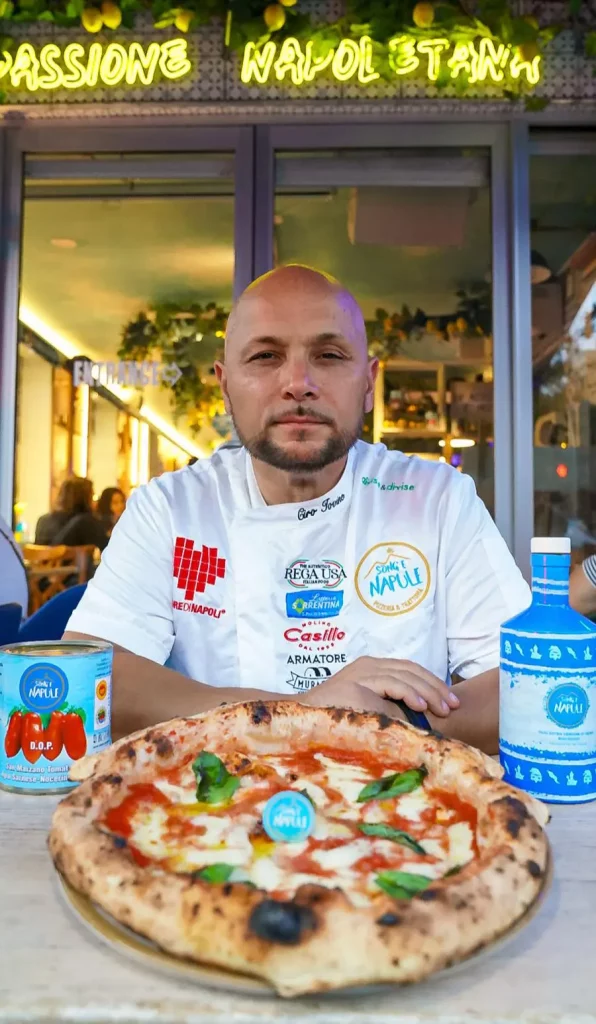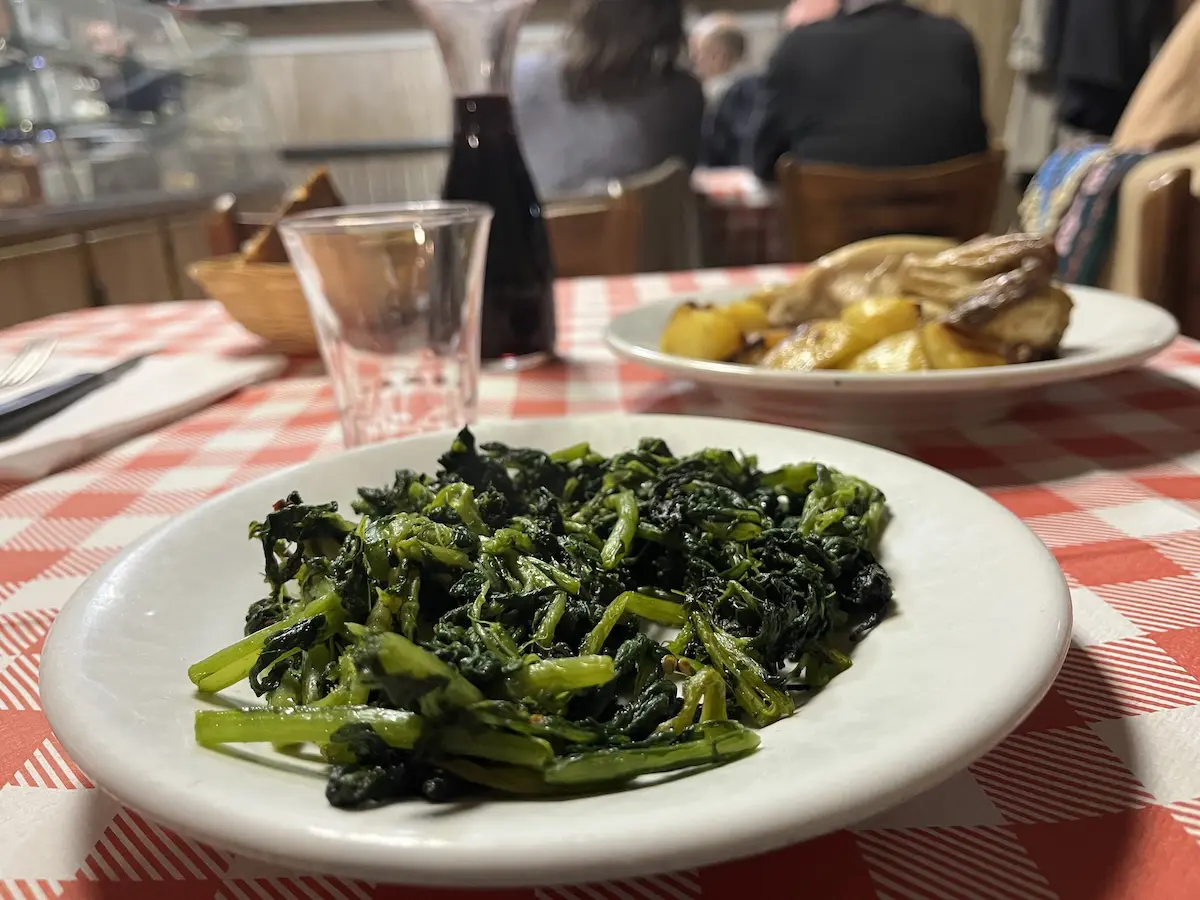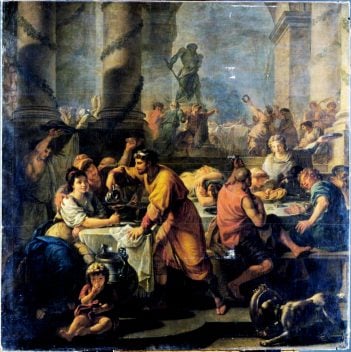The countdown is on for D‑Day—8 August—when tariffs will take effect, following last Thursday’s executive order by President Donald Trump, which confirmed 15 percent commercial duties on goods from the European Union. While diplomatic “sherpas” are working to secure exemptions in certain sectors, Italy’s agri-food industry is bracing itself. On the other side of the Atlantic, restaurateurs, importers, and ambassadors of Made in Italy are preparing for the fallout with awareness, clarity, and the resilience and pragmatism characteristic of New Yorkers.

Everyone agrees on one principle: “No compromise on quality — defend Made in Italy.” Here's a look at how the Italian dining scene in the Big Apple is navigating the situation, whether or not tariffs are imposed—amidst shrinking wine consumption, escalating ingredient costs, inflation, and a weakening dollar.
Giusto Priola, restaurateur and owner for 21 years of Cacio e Pepe, and for six years of the two Pasta Eater locations in Manhattan, offers a practical perspective on the tariffs:
“Since the pandemic, prices have soared: rent, freight, wages. And now tariffs. In six years, the cost of tomato has jumped by $10—raising a simple spaghetti al pomodoro to $22 on the dinner menu. Yes, Americans are still dining out—less wine, more cocktails—but it’s classic restaurants that are struggling. Street food and fast-formula menus hold strong. Pasta survives, always with good margins.”
“Who will bear the cost of these tariffs? Everyone — but especially the consumer. I’ll soon be forced to increase menu prices by $2,” he adds. With New York State’s minimum wage at $16.50 and many restaurants already including a 20 percent tip, final bills are only climbing.
Salvatore Fraterrigo, proprietor of the Sicilian restaurant Norma with three strategic locations in Manhattan, also founded the import–distribution company Norma Group Management, which supplies primarily his own restaurants with peeled tomatoes, busiate pasta, rice, flour, and produces Sicilian oil under the Norma brand:
“There’s a lot of uncertainty, likely to spawn speculation and alarmism. Price increases are real and inevitable in New York. In some places, a Margherita pizza now costs $20,” he notes.
Fraterrigo also points out that the dollar has devalued by 13.8 percent since the start of the year, resulting in over a 20 percent overall increase in raw-material costs from Italy—due to both tariffs and exchange adjustments—and a reduction in clientele amid a crowded restaurant market.
Ciro Iovine, pizza chef and owner of the Song’ E Napule pizzerias (three Gambero Rosso “spicchi” awards), says without hesitation:
“No compromise on quality and a firm commitment to defending Made in Italy. We will continue to proudly represent Italy using excellent, authentic, carefully selected products made with respect for our tradition. If the world changes, we adapt too. Naturally, some costs will rise, but always justly, matching the value we provide. Our priority remains the same: offering a true Italian experience — full of passion, culture, and flavours that tell stories of our land in every dish.”
Michele Mazza and Raffaele Solinas, respectively president and vice-president of the Italian Chefs Association in New York (both restaurateurs and chefs), refuse to surrender in the face of tariffs, pragmatically navigating price pressures while continuing their mission: to promote Made in Italy excellence overseas and stay ahead of change:
“Consumers who know good quality won’t be put off by a $5 increase,” they say. “The real issue will be for those importing large volumes. The impact will be less in full-service restaurants — which are already adapting to changing consumption habits and youth taste trends, driven by social media — than in wholesale.”
“Italian cuisine is hugely popular in New York because it is inclusive and accessible. The winning formula? Pasta, pizza — a fresh, dynamic, competitive and trendy format,” they conclude.
Beatrice Ughi, founder of Gustiamo (an importer–distributor of quality Italian products in the US since 1999), says:
“I expect several complications—like the need to raise prices, possibly losing customer loyalty, and the risk of low-quality Italian-sounding products gaining traction.”
She points out that tariffs aren’t the only pressures; the weak dollar and existing tariffs on products like tuna and pasta have already pushed costs up. “Our producers and suppliers are small-scale—there’s no way they can absorb these increases, which, unfortunately, will fall heavily on consumers.”
A similar outlook comes from Ciro Salvia of Conca d’Oro, an import–export company operating across the US with offerings from entry-level to premium gourmet products (pasta, vinegar, oil, pistachios):
“If we want Made in Italy to stay synonymous with quality, we cannot lower prices. Some items—like balsamic vinegar or sauces—may be more affected. But I don’t think Americans will give up pasta, oil, vinegar, or mineral water. What worries me is the speculation and profiteering exploiting the trade war’s uncertainty.”
Meanwhile, the wine sector isn’t sure if the glass is still half full. Before tariffs could bite, European wine sales were already threatened by declining consumption due to health concerns, changing habits, and alcohol warnings.
Gino Colangelo, founder of Colangelo & Partners (a leading food & wine PR and communications agency in the US), warns:
“These tariffs will cost Americans jobs, harm both US and European producers, weaken American distributors... Niche producers and boutique wineries may be forced to close, leading to job loss in the US and reduced market access for Italian family-run wineries.”
He goes on to say that marketing budgets will likely be slashed—reducing promotional opportunities, training, communications, and events—making the overseas wine market less solid and informed than under normal circumstances.
“In addition to cost cutting, Italian producers have few options in the US market. Exploring alternative markets is only a long-term solution—not a fix for now. US distributors will also cut costs, which usually means job losses.”
Marco Ballarin, Regional Sales Manager at Ethica Wines (Italian wine importer/distributor), adds:
“We must keep seeking new opportunities, stay dynamic, adapt and understand what the market wants. Tariffs will hit entry- and mid-level wine tiers hardest, where price matters most. We must handle the market smartly and work in synergy with our clients.”
Dino Borri, for over sixteen years head buyer for Eataly worldwide and now a food & hospitality consultant in New York, offers a rational analysis:
“Duties uncertainty has left no time for strategic planning: everyone is negotiating how to absorb costs within the supply chain. I believe all of European agri-food will suffer: final prices and labour costs will rise, purchases and consumption will shrink, speculation will take hold. Medium and entry-level segments will be impacted, while premium will suffer less. Company margins will erode. Producing here isn’t cheap, and some products—like Etna wine—can’t be replicated elsewhere. In six months we’ll see whether consumers still choose quality products or go for cheaper alternatives. Meanwhile, there will be panic.”







 Why not every trattoria should be written about
Why not every trattoria should be written about Brigitte Bardot’s final rosé: the wine that marks the end of an icon
Brigitte Bardot’s final rosé: the wine that marks the end of an icon What you need to know about Italy's new decree on dealcoholised wine
What you need to know about Italy's new decree on dealcoholised wine Why Arillo in Terrabianca's organic approach is paying off
Why Arillo in Terrabianca's organic approach is paying off





